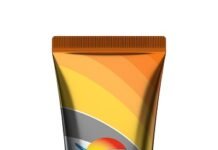Today’s consumers are faced with a plethora of choices for everything and are often victims of over-communication. But the relationship of any strong brand with its consumer depends largely on brand awareness and its positive associations in the consumer’s mind. Thus, even in the case of a low involvement category, brand awareness has a critical role to play to recall their preferred brand and then nail the buying process.

As per the Customer-Based Brand Equity model, the first step in building a strong brand is to ensure identification of the brand with customers. This is where design plays a pivotal role. Before we can create brand awareness, it is important to define the brand identity and then subsequently develop the visual identity, which in turn helps to link the brand—the name, logo, symbol, icons, etc.—to certain associations in memory.
We are visual creatures and visual identity is not only limited to its logo but also the entire system, which includes colors, fonts, forms, shapes, icons, tone, etc. Hence, I always recommend creating strong visual assets. With consistent exposure, consumers are able to identify the brands through these visual assets and brand elements. The idea is to develop such assets and elements, which can communicate the right brand story and drive home the point of differentiation with competition.
As per Keller, there are a few useful criteria for choosing and designing these visual assets.
- Memorability: It should be easy to remember and help recall the brand
- Meaningfulness: It should be relatable with the product, category, consumer and the brand itself
- Aesthetic appeal: This pertains to hygiene
- Transferability, both within and across product categories as well as across geographical and cultural boundaries
- Adaptability and flexibility over time, and
- Legal and competitive protect ability: It should not be a copy of another brand and shouldn’t infringe on other IP rights
Brand equity can be defined as the consumer value endowed by the brand to the product. It is rooted in psychology and consumer cognitive processes. The value of a brand—and thus its equity—is decided in the marketplace by the words and actions of the consumer. The real value of a brand exists in the thoughts, feelings, beliefs, perceptions, attitude and experiences in the minds of the consumer.
Hence, a higher brand equity will occur when the consumer has a higher level of awareness and familiarity with the brand—high brand recognition.
A very relevant case here is when we at WOW Design were revamping JKHC’s Park Avenue deodorant for men.
JKHC’s Park Avenue deodorant enjoys the second spot in the deodorant category having a favorable market presence. The brand Park Avenue has a premium and international imagery, owing to its association with apparel and also the name per say. The brand targets a little more mature audience—that of a ‘successful professional’ as opposed to a ‘college goer’ for competitive brands.
The existing pack of Park Avenue deodorants was also mostly variant driven. The association of the deodorant range with the brand Park Avenue was very weak. We took up the challenge of infusing the character of the brand Park Avenue into the packaging design.
We started off by understanding and weighing the existing equity of the brand. This led us into the apparel store, which was much more premium and suave compared to the imagery of the current deo range. When we asked the consumers about the brand, the first thing that came into their mind was the apparel range and they associated it with the working professionals. We thought why apparels cannot be a good starting point for our design inspiration. And stripes are passé’ so we took contemporary design textures and patterns on to the background of the packaging as a starting point.

We also figured out that the falcon as an icon also had a fair bit of a recall with the brand next to apparel association. We believed that it is a brilliant icon to be taken forward into the personal care range. It represents the free spirit of today’s youth as well as exuberates the confidence of the ‘successful professional’ we were targeting. It was the second thing to come on the pack and placed strategically at the kink on the bottle to give it dynamism.
The new packaging design brought in more of the family feel by giving more visual weightage to the brand Park Avenue. At the same time, the importance of variants in choosing the products wasn’t forgotten. While they now occupied less space on the pack, they were right at the top. Attention was paid to develop graphics for each variant, which was inspired from the variant names, again reinforcing the association between them. For instance, sun was the inspiration for Good Morning, mountains for Cool Blue, fingerprint for Mark and likewise for the other variants. The textured pattern created for the bottom half was also inline of these elements, reminding of Park Avenue’s apparels.
The new packaging design solution delivered not only a synchronized look, indicating it is a Park Avenue offering beyond doubt, but a strong individuality for each of its variants. It also brought in a better resonance with the Park Avenue’s brand equity and brand imagery.
This is the way in which design can help facilitate the process of consumer brain mapping and play a key role in building brand equity.
Saswata Das, partner and executive director at WOW Design, is an expert in Marketing and Design Strategy and has over a decade’s experience of nurturing brands and helping them grow.











